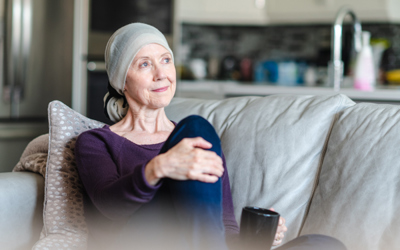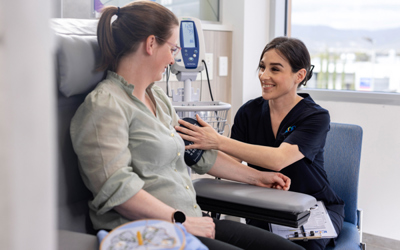Quick facts about non-melanoma skin cancer
Australia has the highest rates of skin cancers in the world, with non-melanoma skin cancer the most common cancer in Australia
There are approximately 580,000 cases of non-melanoma skin cancer diagnosed in Australia each year
Types of non-melanoma skin cancer
The most common types of non-melanoma skin cancer are:
-
Squamous cell carcinoma (SCC)
SCC makes up approximately 30% of all non-melanoma skin cancers. These cancers develop from squamous cells in the superficial layer of skin and commonly appear in areas of high sun exposure. They can grow quickly and may spread to lymph nodes and other organs.
-
Basal cell carcinoma (BCC)
The most common type of skin cancer, BCC develops from basal cells in the superficial layer of the skin and accounts for two-thirds of all non- melanoma skin cancers. They can appear anywhere on the body but most commonly develop in areas where the body has had reasonable levels of sun exposure. These cancers do not typically spread from the area where they first developed and while treatment is recommended, they are not usually life threatening.
There are rare types of skin cancers which account for 1% of non-melanoma skin cancers, including merkel cell carcinoma and some forms of lymphoma of the skin.
Signs and symptoms of non-melanoma skin cancer
It’s important to see your GP or healthcare professional if you notice any of the skin changes listed below. Discussing anything concerning as soon as possible can help give you peace of mind and offer the best chance of successful treatment if you develop a non-melanoma skin cancer.
Squamous cell carcinoma
Squamous cell carcinomas can grow quickly over weeks or months. Symptoms include:

A sore that doesn’t seem to heal

Tender or painful to touch

A lump that grows quickly

Thick, scaly red spot

Changes to sensation of skin around the lesion
Basal cell carcinoma
Basal cell carcinomas can grow slowly and often display little or no symptoms. Symptoms can include:

Scaly patches of skin (pale and shiny or bright pink)

Flesh-coloured lump
Stages of non-melanoma skin cancer
Usually a biopsy and imaging will be performed to determine the stage of non-melanoma skin cancer, which will then be categorised using the TNM system. This helps define what your cancer might need in terms of treatment. The TNM stands for:
Tumour – Size of the skin cancer and degree to which it has affected other tissue
Node – Is a measure of whether local lymph nodes have been affected
Metastasis – The degree to which the cancer has spread to other organs of the body
Other than the TNM information, it is also important to know how aggressive a particular skin cancer is. Determining the grade of the cancer involves specialists looking at the skin cancer under the microscope and assessing how nasty it looks, and subsequently how aggressive it could be for the patient. Tumour grades are described below:
-
Grade 1 (low)
The cancer is slow growing, with cancer cells looking a little different to normal skin cells.
-
Grade 2 (intermediate)
The cancer is growing faster than grade 1 cancer cells and the cells do not look like normal skin cells.
-
Grade 3 (high)
The cancer cells are fast growing and look very unusual.
Treatment for non-melanoma skin cancer
There are many different types of treatment for non-melanoma skin cancer. Your treatment will depend on you and your cancer.




